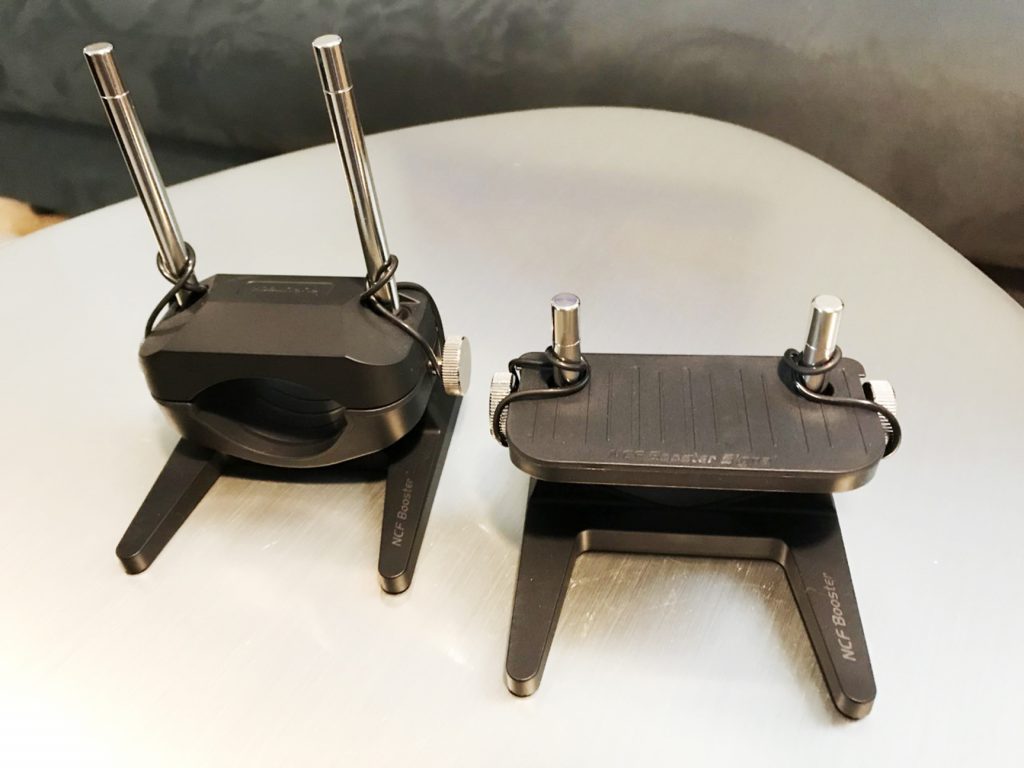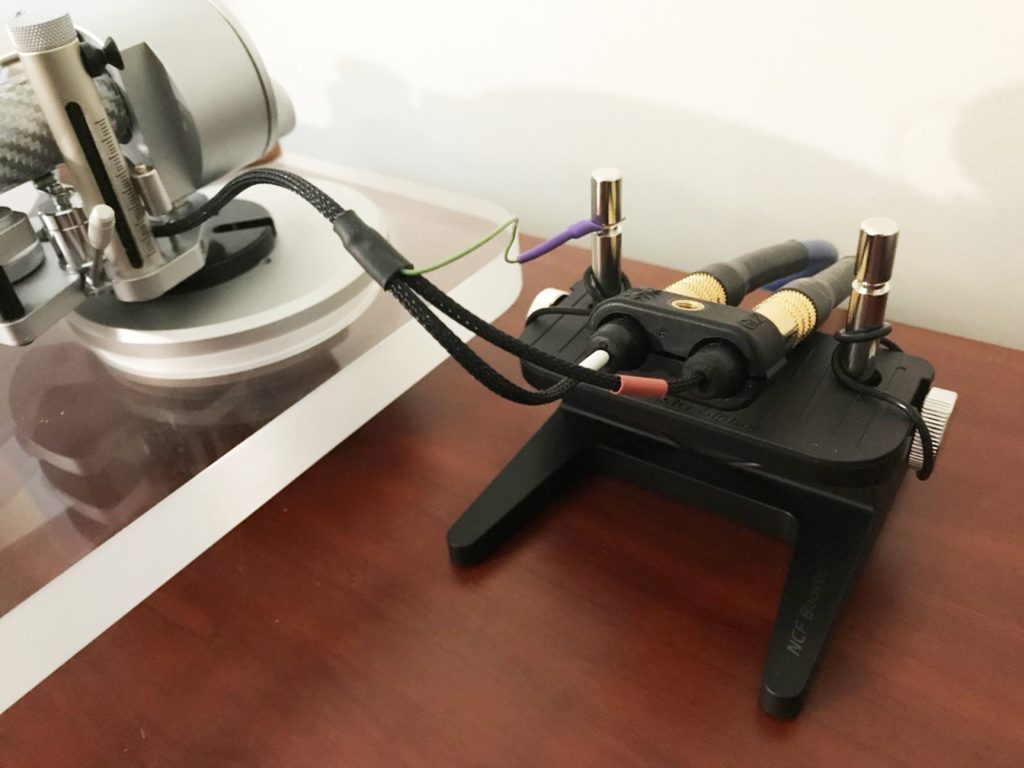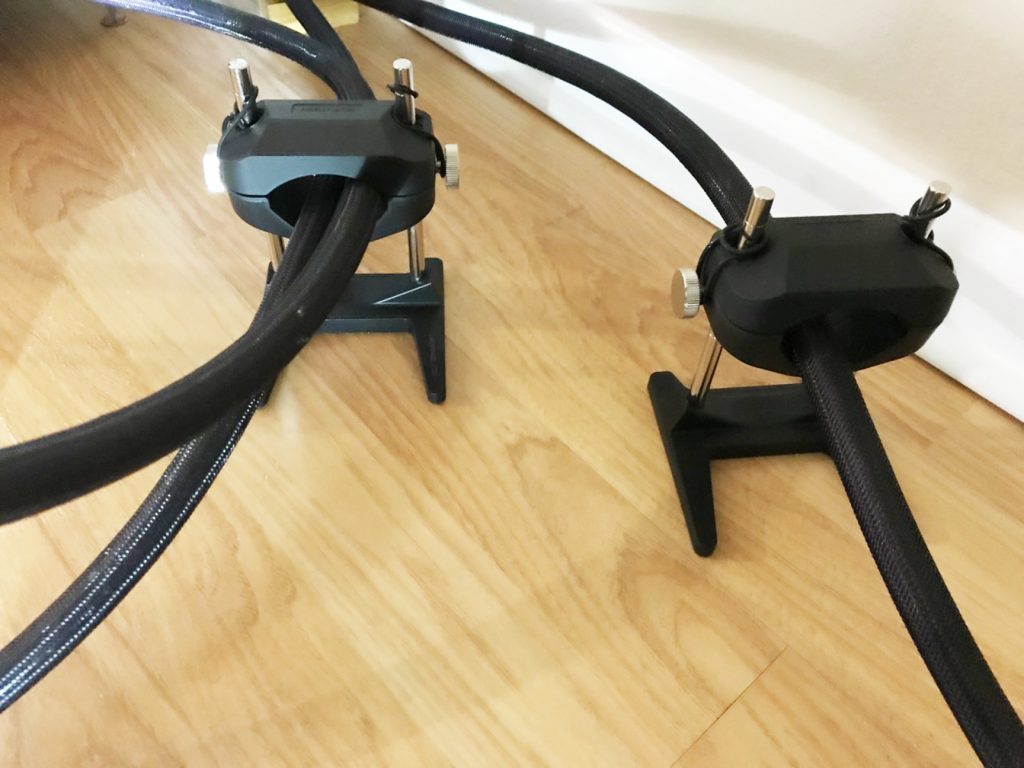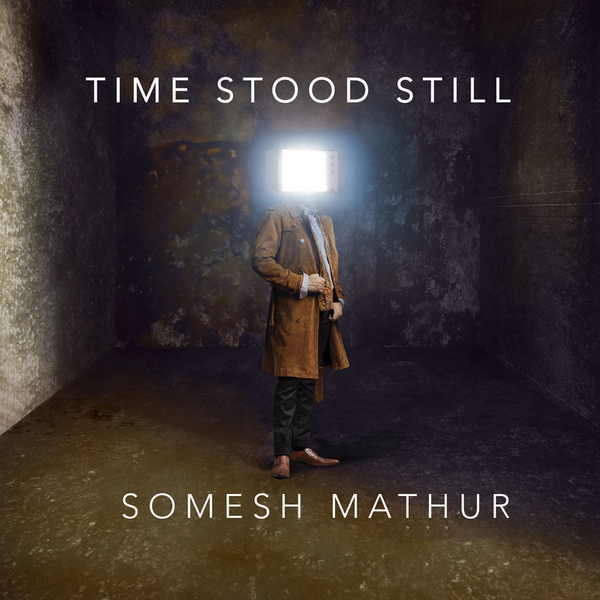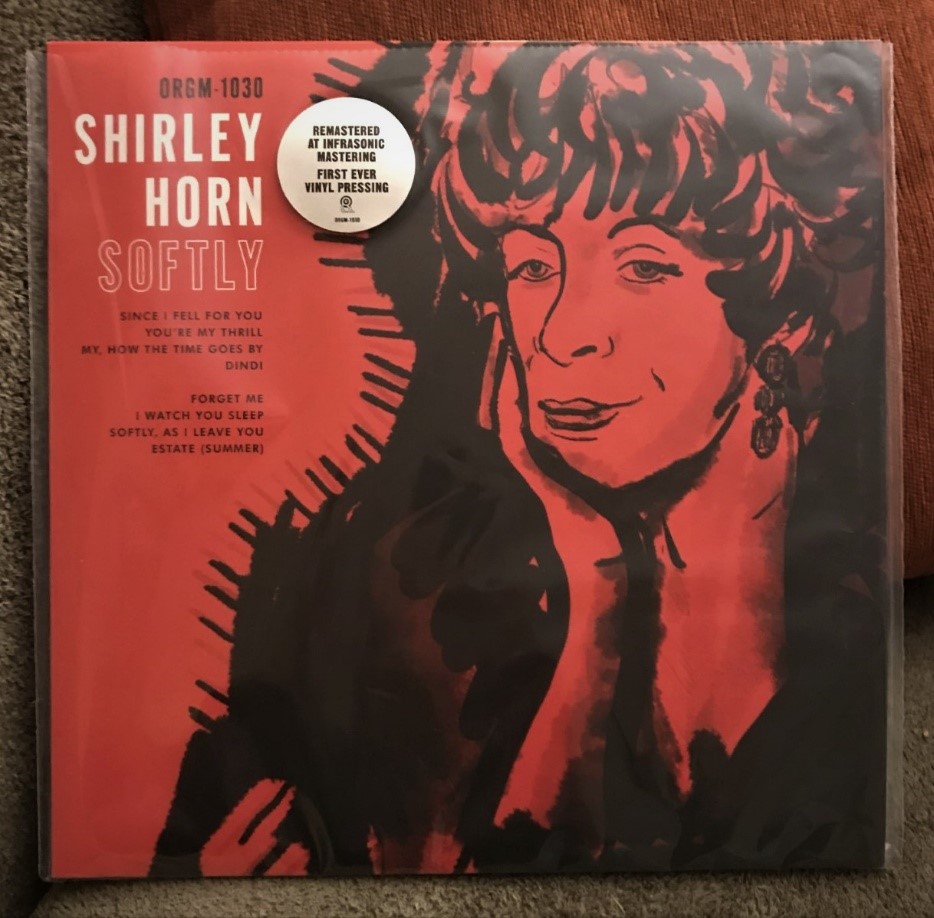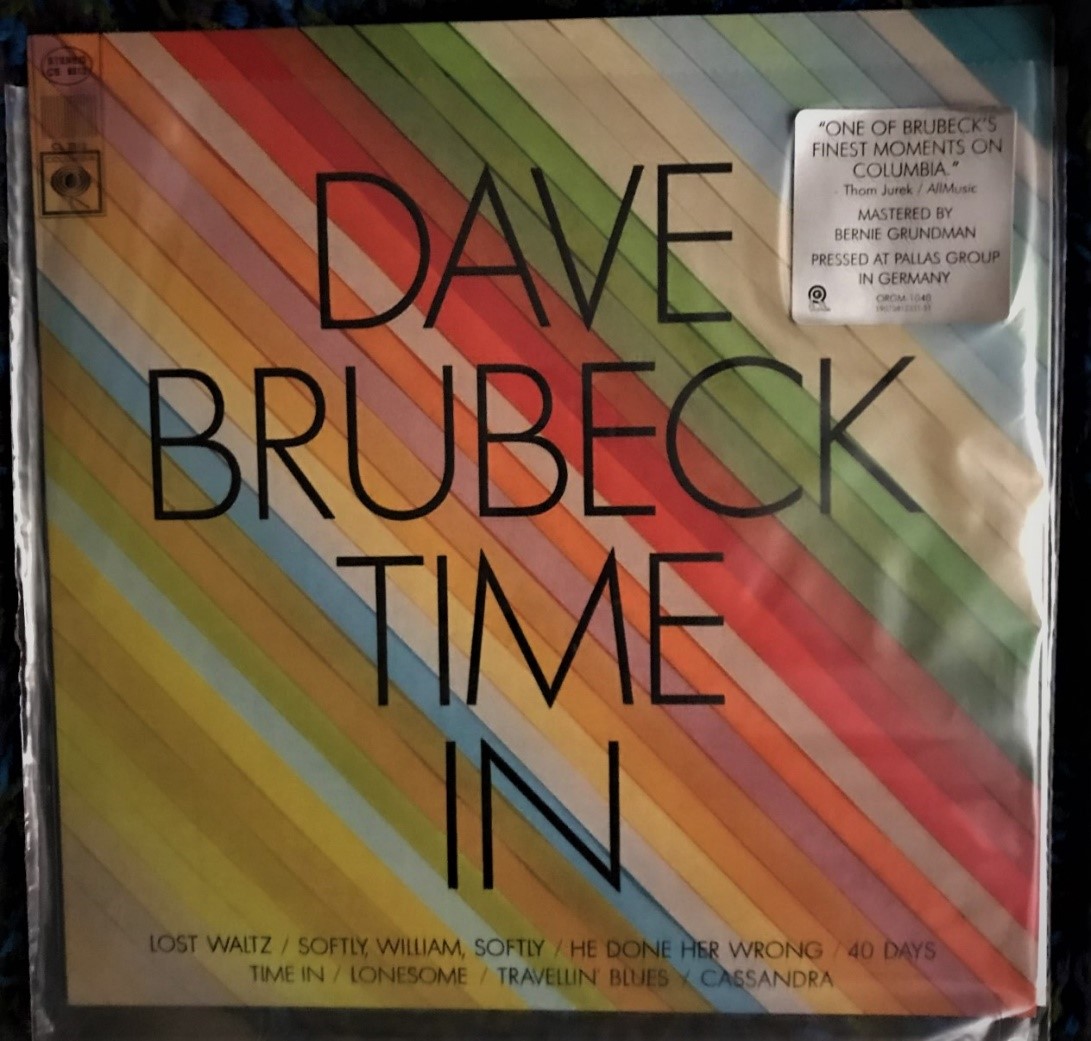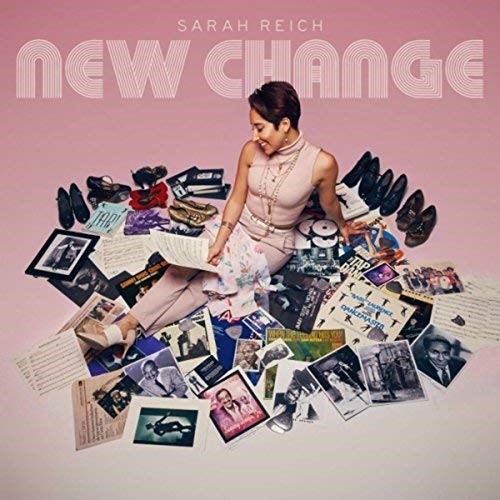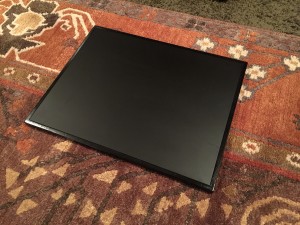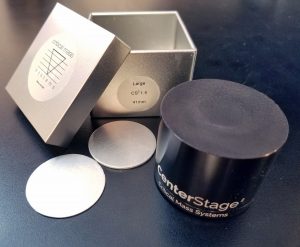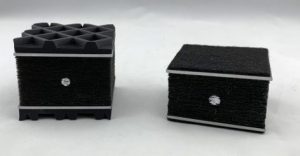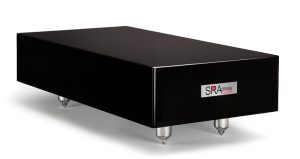Marc Phillips has been doing music reviews for Positive Feedback for quite a while now. In the interest of full disclosure, he is also a distributor (Colleen Cardas Imports), and has a separate life selling fine audio gear. You'll want to keep this in mind as you read his comments...but his evaluation dovetails exactly with my own take on the Furutech NCF Boosters. They are remarkable devices.
Dr. David W. Robinson, Ye Olde Editor
"A good engineer never says, ‘that can't work.' A good engineer says, ‘Why does this work?"
I've heard this old engineer's motto from at least a couple of qualified people over the years. The first time, however, was back in my earliest days as a reviewer when I first had some hands-on experience with some of the more intriguing products from Furutech of Japan. This particular product, of course, was Furutech's vinyl demagnetizer, the DeMag. The staff at the magazine tested this product extensively using A-B comparisons, and damned if it didn't work in far from subtle ways. Every LP we placed in this sleek flying saucer came out sounding fuller and larger than before. It sounded as if the volume had been turned up slightly in each case. We dragged person after person into the room and asked them if they heard a before-and-after difference and every single person did. We're talking about a distinct "wow" type of response, not a "leaning forward carefully with a clipboard and trying to glean some sort of impact on the sound" type of response.
Those in the room who were tasked with the review made the mistake of discussing the product on a couple online forums, and of course the reaction was extremely skeptical. That can't work! Vinyl isn't magnetic! Placebo effect! Snake oil, damn you!
That was more than a decade ago. In the intervening years I've had plenty of experience with Furutech's sometimes mind-boggling innovations. In the interest of full disclosure as an importer and distributor of high-end audio products, I have teamed with Furutech at many audio shows and I have always been pleased with the results. To this day I use plenty of Furutech products in my reference system including Lineflux interconnects, Speakerflux speaker cables, Powerflux power cables, a wide variety of power filters and a F-tp615 power conditioners. To say that I generally like their products is an understatement, which is why Furutech's Graeme Coley likes to send me new products for evaluation. There are no expectations from either party, just a friendly consultation among colleagues.
Nearly a year ago I was asked by Graeme to try out Furutech's new NCF Boosters, which are small clamp-like trestles that have been embedded with a proprietary new crystal material. These "boosters" can be used in a purely practical manner for dressing and elevating cables in a system, but the crystals provide a number of sonic attributes—most notably, reducing the noise floor in a somewhat dramatic way. The term proprietary is key here, however. I was asked not to divulge the source and composition of these crystals so that others wouldn't copy and infringe upon the trademarks.
What I can tell you about the science behind the NCF Boosters is they're made from audio-grade ABF resin and NCF nylon resin that reduces static charge, which supports their practical use as a cable elevator. The crystal material is known as Nano Crystal² Formula, hence the NCF nomenclature, and Furutech says this material has two active properties. "First, it generates negative ions that eliminate static," the literature explains. "Second, it converts thermal energy into far infrared. Furutech combines this remarkable material with nano-sized ceramic particles and carbon powder for their addition ‘piezoelectric effect" damping properties."
Installation is simple. You assemble the clamps on the supplied extension shafts—more on these later— and route the cables through a cradle-like surface. A small rubber ring can be twisted onto the top of the assembly to provide additional mechanical damping. Once you assemble one NCF Booster, you'll be able to knock out the rest in just a few minutes.
Sounds mysterious and tweaky, right? But here's the thing about Furutech—they develop new products constantly and their innovations only come after extensive testing in their labs. Once they can back up these new materials and processes with the science, they focus on listening tests to determine if there is a positive effect on the sound. They don't release a product until that "wow" response is obvious. For example, Furutech was one of the first high-end companies to back up the positive impact cryogenic treatments made on copper and other metals—they used microscopic images to show how the grains in the metal became better aligned so that the signal passed more freely. Furutech has also proven, through careful and thorough research, how rhodium connectors and other technologies can result in better sound.
Graeme told me that while one NCF booster could yield an audible improvement in sound, addition boosters increased the effectiveness of these devices. That harkens back to the "Mana Effect" of twenty years ago when Mana, a UK company that made equipment stands, claimed that every level of their tempered-glass shelves would create a cumulative effect on the sound, so much so that Mana fans would place glass shelf after glass shelf underneath their components until a "super stand" was built. Those skeptical of accessories and tweaks that adopt a "more is better" approach would accuse such companies of gouging the consumers in the pursuit of some sort of rabbit hole of promised sonic perfection. When it comes to NCF Boosters, however, additional units result in a more effective way to suspend and isolate cables from the environment. Again, we're back to common sense.
I started off with three NCF Booster Performance-enhancing Connector and Cable Holders, which retail for $350 each. At the time my system contained mostly valve components and high-efficiency speakers—my amplifier was the 14wpc Unison Research Preludio integrated amplifier and a pair of Unison Research Max2 loudspeakers, the first pair we had received in then US for distribution. The Max2 was ideal for low-powered amps such as the Preludio—it featured a 15" long-throw woofer mated to a compression horn tweeter and had an efficiency of 96 dB with an 8-ohm impedance. I was very happy with the combo, but one issue I had was with tube rush. This noise wasn't something you could hear from the listening position, but it was audible when you placed your ear close to the speaker's baffle. That's how I first discovered the effectiveness of the NCF booster. I was hunched over on my hands and knees to carefully place the NCF under the speaker cable just about a foot away from the binding posts, and I could easily hear a reduction in the tube rush. That was my first "wow."
I discussed this observation with an industry friend, and he suggested that merely moving the cables around might have prompted the improvement. I went back to the system and moved the cables back and forth and all around and I could not duplicate the experience. The only way to hear that audible reduction of the noise floor was to remove and replace the booster. It worked every time.
I wound up placing two NCF boosters under the speaker cables, and the third booster under the main power cable that went from the wall outlet to the Furutech power line distributor. Graeme suggested that I experiment further, placing the NCF under power cords behind each component, especially the power amp. That's an important consideration for a product like the NCF—you never know where they'll work the best since every system is different, and every component has its own set of potential noise issues. I didn't hear huge differences between placement at first since every location seem to yield the same results—lowered noise floor and a better sense of coherence from the system as a whole.
I am a distributor, which means that my system is continually evolving as I personally evaluate components. Since I've been spending more time writing music reviews, however, I've been settling in on a permanent system, one made up of the very best components I have on hand. I've chosen what I feel is my "off-the-merry-go-round" system, one that pushes all of my buttons. I've been doing most of my listening with the Brigadiers Audio BA2 monitor loudspeakers, the Unison Research CDE CD player with the dual-DAC option, the Unison Research Giro turntable with The Wand Master tonearm and both a Denon DL-103 and the Transfiguration Axia cartridges, the PureAudio Vinyl phono preamplifier and either the Unison Research Unico 150 integrated amplifier or a combination of the PureAudio Duo2 stereo power amplifier and the PureAudio Control preamplifier. (Yes, these are mostly products I distribute but I truly like each one for different reasons. These are the products I want to keep once I retire from this crazy industry.) All the cabling and power management is, once again, from Furutech.
As you can see, this is a very different system than the low-powered/high-efficiency one with which I began my evaluation of the NCF. The Brigadiers speakers have a much lower efficiency (85 dB, 5 ohms), and the Unico 150 has 220wpc when I use the 4-ohm taps. The PureAudio Duo2 is 100wpc, heavily biased into Class A for the first 25wpc, but you can hit a switch on the back panel and suddenly the Duo is sporting 25wpc, all pure Class A. I prefer the sound of the amp in the latter configuration since my listening room is small enough to work well with this speaker-amplifier match.
This new reference system now has fewer tubes in it, and it is much quieter in general. I knew I wasn't going to hear the same dramatic difference in the noise floor after installing the three NCF boosters, and I was right. But I still sensed that improvement in overall coherence, that I could hear less artifacts in the sound and a greater sense of the synergy between the room and the system. It seemed as if I spent less time making fine adjustments to speaker placement—that I was able to get everything locked in with much less effort than usual.
I reported my preliminary findings with Graeme, and his response was to send more NCF Boosters so that I could test out the theory that more is better. This time he sent a smaller, more basic version of the NCF Booster called the Signal Cable Riser and RCA/XLR stabilizer which retails for $215 each. Instead of the large rounded two-piece clamp in the larger version, you get a more simple flat platform. As you might imagine, this version is meant for less critical locations along the signal path and to act as cable elevators in more elaborate set-ups. All in all, I wound up with five of these smaller NCFs to add to the three larger ones. In addition, I was sent many packages of the NCF Extension Shaft Bars, which retail for $40 for a set of ten, which allow you to increase the height of the Boosters so they can be placed almost anywhere. By the time I had all eight NCF Boosters situated, my cables looked like the track for a steel roller coaster ride. More importantly, I was able to route my cables so that none of them touched the ground at any given point.
While I continued to experiment with placement, I found that the key locations for the NCF were as close to the wall outlet as possible, underneath the power cord for the amplifier and, not surprisingly, to support the tonearm cables for The Wand. The supplied cables are relatively short, and I found it a challenge to get the tonearm close enough to the back of the phono preamp so everything was positioned nicely on the equipment rack. This lone NCF Booster helped to keep everything tight and in place, and I also noticed that my analog rig was the quietest it has ever been.
After several months of living with this system, I felt completely and utterly content with the sound. Since my system over the last decade has constantly evolved, it's easy to lose track of the sweet spot. One little change can make you feel lost in your own system, and sometimes it takes a while to get the magic back. With all of the NCF Boosters in place, it seems as if minor changes to the system are still noticeable, but there's less of a chance of losing the overall mojo. It's almost as if the NCF Boosters maintain the equilibrium of the system even when those changes are made, and it's much harder to make one of the horrible mistakes where you ask yourself, "What happened to the sound I love?"
With tweaks and accessories, it's often difficult to gauge the improvements as you add them, so the best way to isolate what these products are actually doing is through subtraction. Yes, I yanked them all out at once and sat down for an extended listening session. No, I'm not about to tell you that my system was suddenly horrible and unlistenable, since the quality of the components involved and the basic room set-up was still intact. What I did notice first was I no longer melted into the sofa. I found myself wondering what kind of improvements I should make next. Should I move the speakers a little further out into the room? The Wand tonearm is the newest addition to the system, and I wondered if I should start adjusting the VTA or playing with the tracking force. When I had the Unico 150 in the system, I started thinking about putting the PureAudio separates in. I wondered if my other pair of monitors, the Trenner & Friedl ARTs, were a better fit for the room.
I simply couldn't stop thinking about what to do next. With the NCF Boosters in place, I was simply happy with the way things were. Hmm.
As I've already mentioned, the results will vary according to the system and the living room. But with all of the combinations I've tried, the common denominator is increased focus. If you talked to people who have played around with high-end audio for many years, either as an audiophile or in the industry, they'll tell you if a system is set up correctly after just a few minutes of music—maybe even seconds. It sounds right, or it doesn't. The NCF Boosters seemed to increase the odds of getting it right the first time. I've talked to others who have used the NCF Boosters and their comments are aligned with this observation. The noise floor is lowered, allowing more music to flow from your system. Details in the music and clearer and more obvious. Imaging and soundstaging are more three-dimensional.
Now that I've had the NCF Boosters in my system for a number of months, I don't want them to go away. While they can be very expensive in the long run, especially if you go hog-wild and put them everywhere, you can start off slow like I did and just place a few in the most important locations. Once you hear them for yourself, you'll be amazed at what a seemingly simple device—even with those mysterious crystals—can do for your system.
Furutech NCF Booster
Retail: $350 per unit
Furutech
Check the Furutech Web site or your preferred Furutech dealer for more information or to purchase.
All photographs by Marc Phillips; image processing by David W. Robinson




